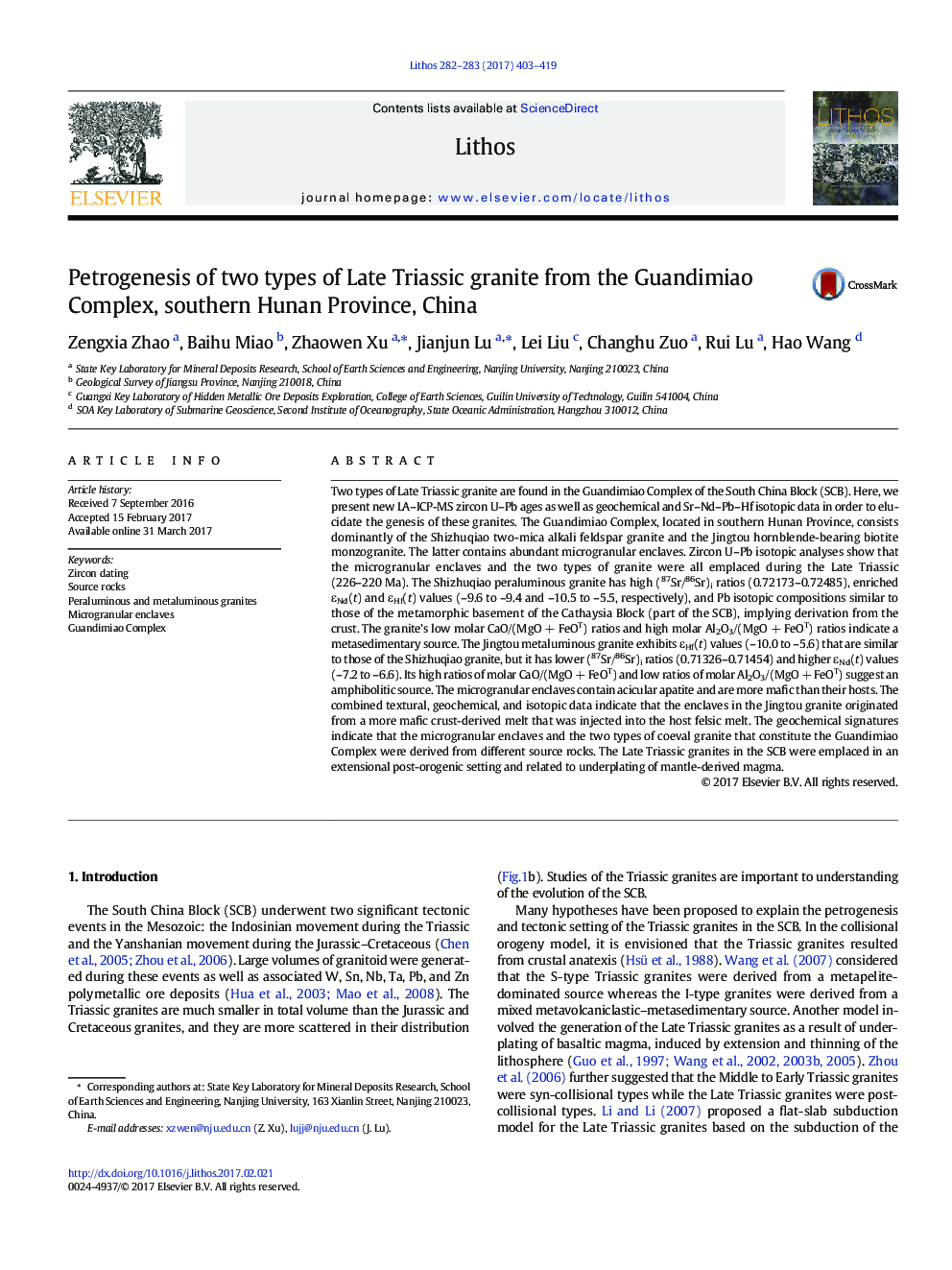| Article ID | Journal | Published Year | Pages | File Type |
|---|---|---|---|---|
| 5784142 | Lithos | 2017 | 17 Pages |
â¢Two types of granite and enclaves from Guandimiao Complex crystallized at 226-220 Ma.â¢Peraluminous Shizhuqiao granite is derived from metasedimentary rock.â¢Metaluminous Jingtou granite is originated from amphibolitic rock.â¢Enclaves are derived from a more mafic crustal melt injected into the host magma.
Two types of Late Triassic granite are found in the Guandimiao Complex of the South China Block (SCB). Here, we present new LA-ICP-MS zircon U-Pb ages as well as geochemical and Sr-Nd-Pb-Hf isotopic data in order to elucidate the genesis of these granites. The Guandimiao Complex, located in southern Hunan Province, consists dominantly of the Shizhuqiao two-mica alkali feldspar granite and the Jingtou hornblende-bearing biotite monzogranite. The latter contains abundant microgranular enclaves. Zircon U-Pb isotopic analyses show that the microgranular enclaves and the two types of granite were all emplaced during the Late Triassic (226-220 Ma). The Shizhuqiao peraluminous granite has high (87Sr/86Sr)i ratios (0.72173-0.72485), enriched εNd(t) and εHf(t) values (-9.6 to -9.4 and -10.5 to -5.5, respectively), and Pb isotopic compositions similar to those of the metamorphic basement of the Cathaysia Block (part of the SCB), implying derivation from the crust. The granite's low molar CaO/(MgO + FeOT) ratios and high molar Al2O3/(MgO + FeOT) ratios indicate a metasedimentary source. The Jingtou metaluminous granite exhibits εHf(t) values (-10.0 to -5.6) that are similar to those of the Shizhuqiao granite, but it has lower (87Sr/86Sr)i ratios (0.71326-0.71454) and higher εNd(t) values (-7.2 to -6.6). Its high ratios of molar CaO/(MgO + FeOT) and low ratios of molar Al2O3/(MgO + FeOT) suggest an amphibolitic source. The microgranular enclaves contain acicular apatite and are more mafic than their hosts. The combined textural, geochemical, and isotopic data indicate that the enclaves in the Jingtou granite originated from a more mafic crust-derived melt that was injected into the host felsic melt. The geochemical signatures indicate that the microgranular enclaves and the two types of coeval granite that constitute the Guandimiao Complex were derived from different source rocks. The Late Triassic granites in the SCB were emplaced in an extensional post-orogenic setting and related to underplating of mantle-derived magma.
